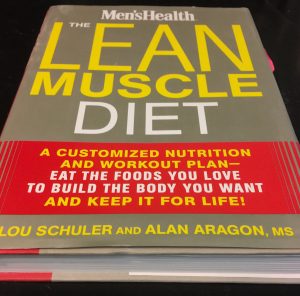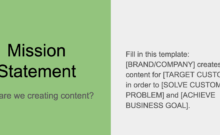Most brands’ content marketing fails because it lacks adherence to solutions ideally suited to their businesses. That is, they’re trying to execute a strategy that’s not optimized for the content marketing success they hope to enjoy. Simply put, their strategy is neither well defined nor in line their brand’s content marketing goals. Take heart, however, in knowing that there is no bad strategy; there’s only a strategy that’s bad for you.
“Given how difficult it is to be successful at content marketing, are we all doomed to struggle?”
I get asked some variant of that question at least once every week, whether in person, via emails or via forums and discussion boards.
My answer: Not necessarily.
Lasting success at content marketing has more to do with patience, choosing the right path for your brand, and a willingness to change course when conditions warrant than anything else. Sound familiar? The same can be said for finding success in any meaningful endeavor. In my experience, the No. 1 reason brands’ content markeikrbrands don’t find success with content marketing is they too often set unrealistic goals if they set a goal at all. This leads them to chase one bad idea after the next until they finally throw up their hands and give up.
An interesting and apropos parallel is dieting.
People who are serious about losing weight often starve themselves, unleashing an unsustainable cascade of events that deprive their bodies of the nutrients needed to function. Their bodies then revolt from hunger, and two weeks later they’re knee-deep in cake and ice cream. The dieter blames the seeming impossibility of successful dieting; the real culprit is they chose the wrong plan—one they could not adhere to—for their goals.
As it turns out, both content marketers and dieters have a lot in common, in that the elements for success are the same.
Table of Contents
How adherence helps us understand why diets fail and how your brand can enjoy successful content marketing
A few years back, I made the commitment to get back to my college weight, so I dove into reading lots of fitness and nutrition books, perusing popular online publications, including blogs, and listening to popular podcasts by well-known experts.
One day, I listened to a podcast featuring Alan Aragon, who I knew as the nutritionist for Men’s Health at the time.
“People who need to lose weight already know the things they need to do—exercise, eat less [junk food], eat more vegetables… . But what you find is that for people to be successful long-term, they need to have a plan they can stick with. That plan must include foods they enjoy and must not be too restrictive if they’re to adhere to [the program long-term].”
More specifically, he went on to talk about how adherence is a core tenet of any successful diet and how it’s unique to each individual.
“Personal preference is the most powerful indicator of long-term adherence,” Aragon shared via Twitter.
When I read his latest book, “The Lean Muscle Diet: A Customized Nutrition and Workout Plan—Eat the Foods You Love to Build the Body You Want and Keep It for Life!” where he and co-writer Lou Schuler lay out a cogent and flexible nutrition plan anyone can use successfully, I saw a parallel with the work I do as a strategist.
I also learned why content marketing fails.
It’s not so much that brands having trouble finding success with content marketing are self-selecting bad goals; it’s that the goals they’ve chosen aren’t meant to yield the success the brand hopes for. For example, a new restaurant that needs customers in their shiny new, leather seats might focus on blogging with hopes that it generates web traffic and thus visitors to their establishment.
The reality, however, is the brand would likely do much better to focus on getting positive reviews via a soft opening, which could get the wheels spinning on word-of-mouth marketing, social media engagement and likely generate visits.
The blogging strategy could work down the road, but it shouldn’t be a first-order priority.
In a nutshell: For lasting success, whether with dieting or content marketing, the key is to find a plan that best suits you/your brand, then be willing to ruthlessly tweak that plan as time goes by and more information is gleaned.
Picking the right long-term plan helps prevent content marketing failure
When most brands say “I cannot find success at content marketing,” what they really mean is “The plan I’ve chosen isn’t the right one for my goals.”
Typically they are clinging to plans they cannot adhere to:
- Trying to create too much content
- Attempting to create content at a pace they cannot maintain
- Copying another brand’s playbook
- Not having the staff in place to execute a content marketing strategy
- Failing to create and follow a viable strategy
In essence, these brands are simply following a plan ill-suited for them.
Through research, interviews, and experience, I’ve developed what I think is a workable plan for any brand to find the ideal plan to put themselves on the path to content marketing success.
Master the basics to find content marketing success
When I first hired a professional strength coach, in 2009, I took one list at the exercise regimen he’d provided and exasperatedly said, “Is that it?” The exercises were simple, things I already knew how to do. What about the crazy stuff I saw others doing in the gym? Turns out, I didn’t need to learn new exercises, I needed to master the basic exercises, then deploy them in a strategic fashion.
It’s the same for content marketers. We cannot skip steps. We need clear, defined goals, which can be used to establish the right right key performance indicators (KPIs). We also need a content strategy to help guide our content ideation, creation and amplification efforts. Additionally, those goals and our strategy must work in unison to help us create a vibrant brand that helps us not just be the first result in the search engine results pages (SERPs), but the first chosen result in the SERPs.
Find your true brand’s content north
Every brand has to decide who they want to be when they grow up. A simple exercise I’ve had brands, especially startups, complete is to have them get core stakeholders in the room and write a few questions on the whiteboard:
- Who are we in the minds of our customers (and ideal prospects)?
- What unique value do we provide that the competition does not?
- How can we add value in a way that positions us to own a larger share of the market?
By answering these questions a brand is veritably ordering their content marketing steps.
For example, through answering “Who are we in the minds’ of our prospects and customers?” it’s very likely they’ll uncover any holes that exist in their brand’s messaging, which could be holding back everything from sales and customer service to content amplification efforts.
As with dieting, the goal is to be the best you (er, brand) you can be.
That means you aren’t chasing the competition; if anything, you’re making the competition chase you.
Find your content-creation cadence
“How much content should we produce?” That’s one of the million-dollar questions in content marketing. Unfortunately, there is no right answer. The key is to figure out at what pace you can create high-quality content, not simply how fast you can create content.
A few things to think about include, but are not limited to:
- Your ability to create content that’s of sufficient quality to garner and keep the attention of customers and prospects
- How much bandwidth your team has to not only create content but promote and distribute it as well.
- The speed with which you hope to attain traffic, links and brand engagement
A lot of brands like to allow the competition to determine how much content they should create.
That is, they input a Google Search Operator for the number of pages the competition has indexed by Google, and then begin to chase that number—the thinking being that the competitor’s content frequency, recency and overall cadence should be a goal.

That’s a bad plan for a host of reasons, not the least of which is no two brands are exactly alike.
A better approach is to, at the outset, determine how fast you can do content well. If that’s one blog a week, so be it.
Start there and increase the content frequency when you have the skills or staff to do so without compromising quality.
Make deliberate practice a priority
Malcolm Gladwell’s book Outliers made millions of people aware of the so-called 10,000 hours rule—the belief that it takes 10,000 of practice to become a master in most fields. The theory, adapted from research by Anders Ericsson, Ralf Krampe, and Clemens Tesch-Römer, led millions of folks to believe all they needed to do to get to the top of their profession was to make time for 10,000 hours of practice.
Turns out, we were misled. There is no defined amount of time it takes to reach the pinnacle of your craft. Rather, it takes a high degree of continuous, deliberate effort/practice, writes Anders Ericsson, one of the original authors of the pioneering work.
“Becoming accomplished in any field in which there is a well-established history of people working to become experts requires a tremendous amount of effort exerted over many years. It may not require exactly ten thousand hours, but it will take a lot.”
Why is this important for content marketing success?
No matter how great your product, service, team or processes are, lasting success will take far more time than you initially plan for. This means your teams must develop a level of comfort with your work and its results being iterative. That SEO plan that worked so well for the previous 90 days will be obsolete when new entrants enter your vertical. The email marketing campaign you rolled out last quarter will be to be revised for the next quarter.
A great way to frame this reality is to develop a culture of continuous improvement, whereby with every piece of content you produce and share, or for every effort, you undertake, your seeking to accomplish three tasks:
This form of dedicated practice gets to one of the most salient and most accurate points Gladwell made in Outliers:
“Practice isn’t the thing you do once you’re good. It’s the thing you do that makes you good.”
Understand that it’s going to take more time than you thought it would
Last year, after every presentation I made, at least one person in the audience stood up during the Q&A and said they felt lost as to how they could be successful at content marketing in a consistent fashion. “We write good blog posts, we share content on social media, we do paid (media) ads,” said one audience member at an event in California. “But we’re getting no traction. No engagement. No traffic to the site. Worse still, the [internal stakeholders] are now asking ‘Why are we doing this if it’s not working?'”
I asked her five questions:
- “How do you know your blog posts are good?”
- “Who says so?”
- “By what measure(s)?”
- “What’s the response to the content you’re sharing on social media?”
- “For the paid ads, do you know that your target audience is using that platform, seeing those ads?”
The person asking the question later told me she was embarrassed at not having the answers to those questions. I shared with her that my point was not to embarrass her, but to highlight how it’s not enough to do something and hope it’ll be successful. We must have a plan, which serves as a playbook to work from, that we can judge our work and its results against. Like many marketers who become disillusioned after not seeing the results they expected, she was ready to throw in the towel, thinking “It shouldn’t be this hard.”
The reality is, yes, it is going to be hard. But anything worth attaining will be, right?
In fact, the difficulty brands have in finding content marketing success is a good thing: It means most of your competition “will continue to crash and burn because they lack the consistency or the patience to build a loyal audience,” says Joe Pulizzi, founder of the Content Marketing Institute.
Developing the stick–to–i-tiveness to stay the course for the long-haul is a necessity born out of the reality that most prospects don’t discover your brand, read a blog, then pull out their credit card to buy your product or service.
Time is neither a detriment nor a benefit; it’s a reality, says expert digital marketer Eric Enge:
“Actually converting the viewers of your content into people who really engage with your site, your product/service or your social media presences, is going to require many touches — and time. Users may need to encounter your brand six or seven times before they start to think that trying your product or service is a good idea, or even before deciding to follow you on social media.Viral hits are good things — they are an accelerator of visibility. Good or great, content is essential to success. Just know that it’s not enough by itself. You still need to have time and repetition on your side.”
Stay strong
Nutritionists often tell dieters “You’ll be successful once you find the plan ideally suited for you.”
Unfortunately, even with a plan in hand, you still have to adhere to it. Content marketing is much the same.
Take the time to discern the plan that’s best for your organization. Once you have it in place, develop what might be called ruthless adherence, which will help your brand’s marketing efforts stay on track and make success much more likely.
Back to you. Is your brand ready to create a marketing strategy it can adhere to?
Resources
- Content Marketing: What Separates Success From Failure?
-
What Content Marketing Will Look Like in 2016: 40+ Predictions
- Why Content Marketing Fails
What do you say about adherence and its relationship to content marketing success? Is your brand doing a good job of keeping content marketing failure at bay?
[image source]





